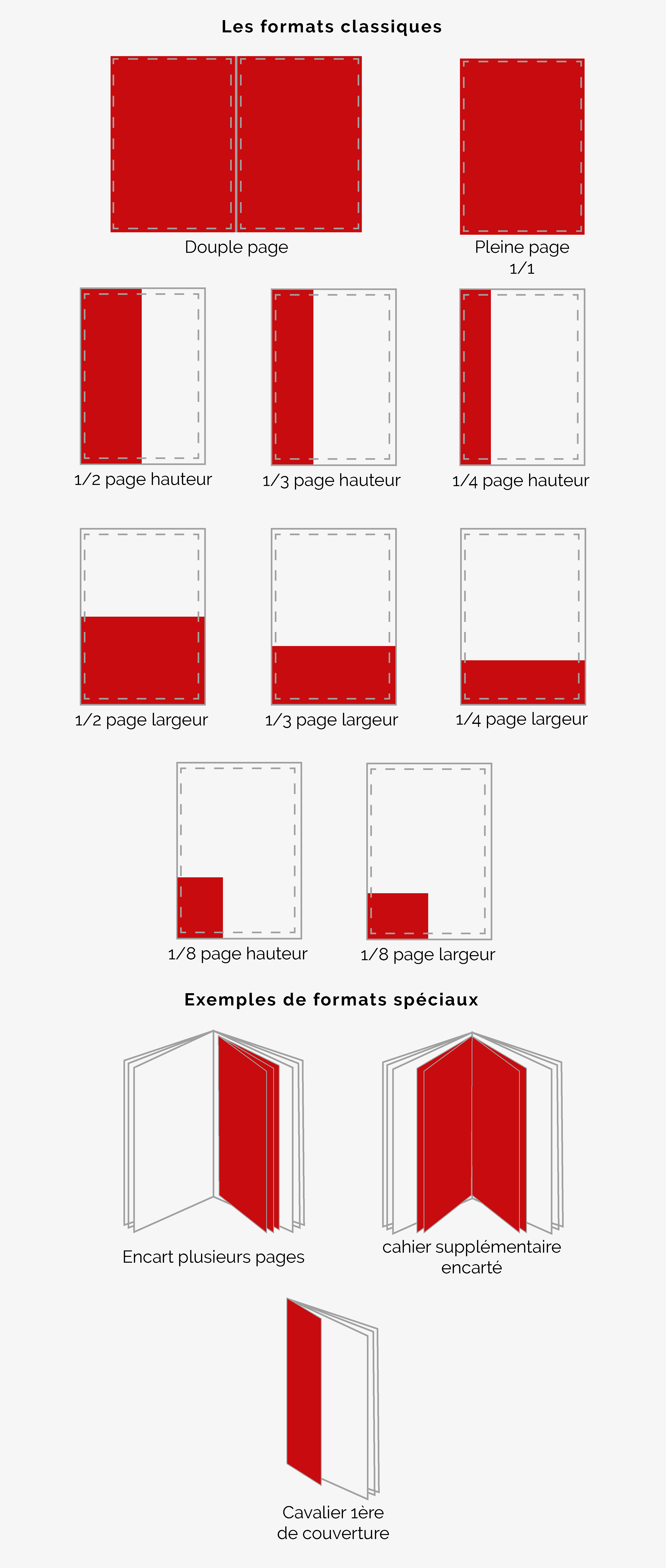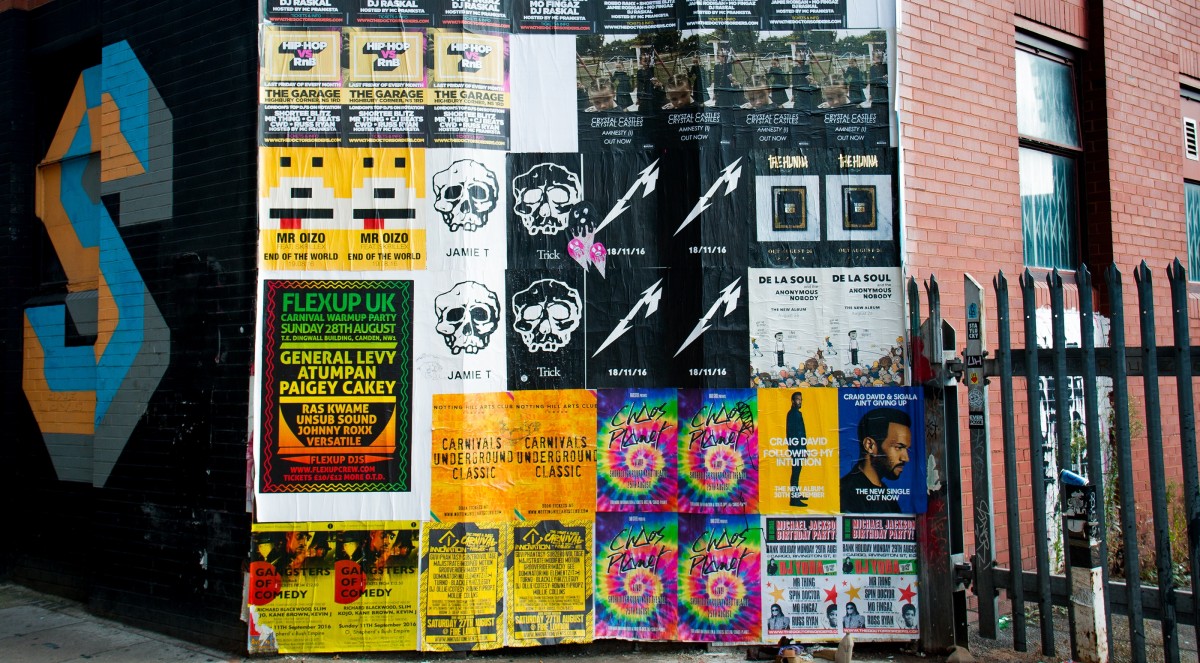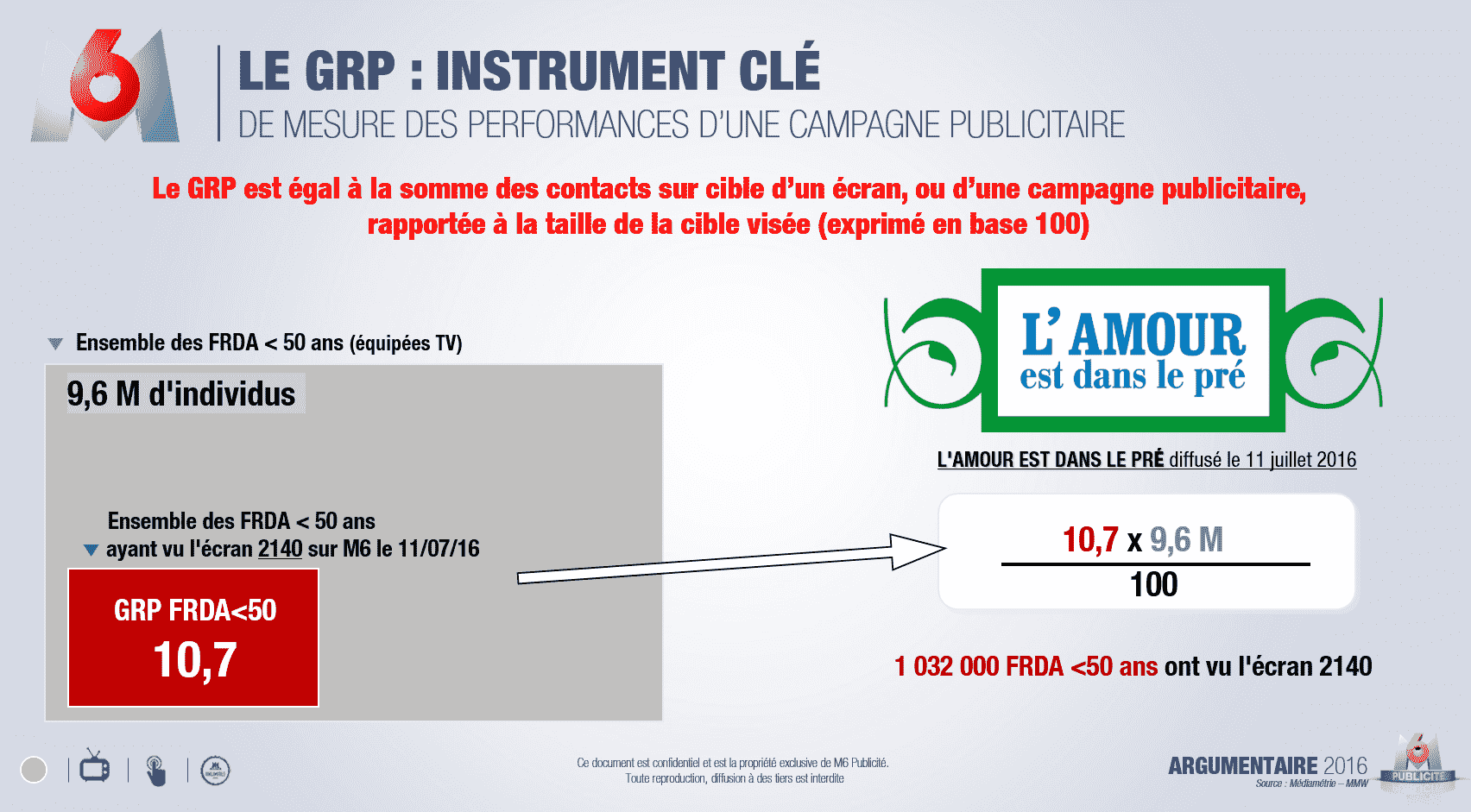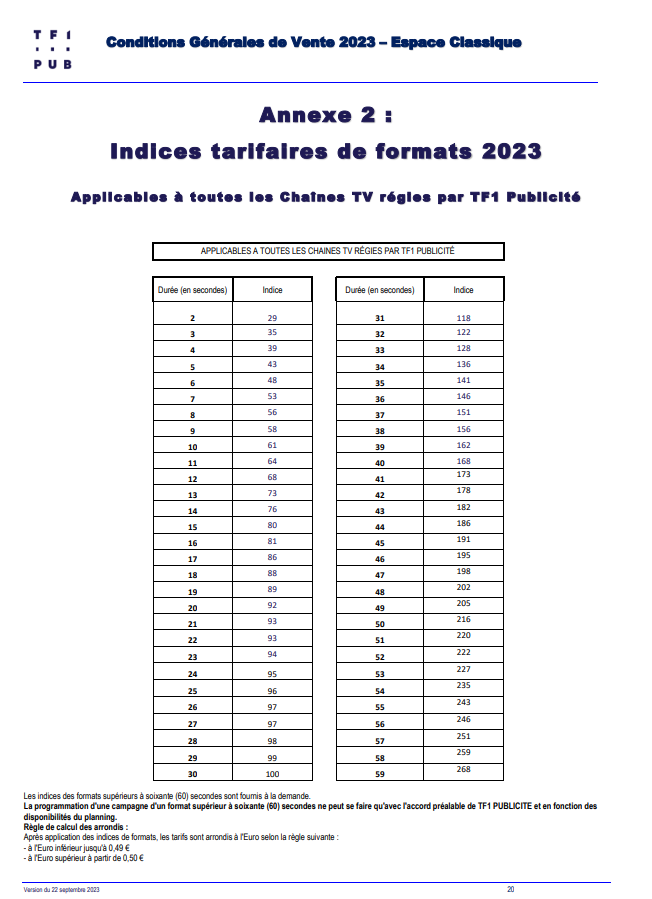Display on unregulated media (e.g., clean tag, fence advertising, etc.).
This glossary is intended for anyone wishing to start in the field of media buying. The list of terms is, of course, not exhaustive, but it will be useful for you to understand media jargon.
We have tried to gather frequently used elements, saving you time and providing assurance in your future advertising space negotiations!
If you are planning a cross-media plan, the following concepts applicable to media buying in print, radio, or TV can be useful.
If you need advice on these media, do not hesitate to contact our media agency:
Brand's Business Partner.
Summary of Various Themes in the Media Buying Glossary:
- Common Terms in Traditional Media
- Lexicon of Media Buying in Press
- Lexicon of Media Buying in Out-of-Home Advertising
- Lexicon of Media Buying in Radio
- Lexicon of Media Buying in TV - Sponsorship Focus
Definitions and Common Terms for Traditional Media
Advertising Rates
BBV (Brut Base Valorisé):
Valuation of the base price of an advertising space following a commercial offer.
BBA (Brut Base Acheté):
Base price without applied discount.
Net Rate (negotiated):
Negotiated base price after applying various discounts.
Net Net Rate:
Negotiated rate with an additional professional discount (usually 15% due to the agency's commission).
Gross Amount including VAT:
Price including all charges, including a 20% VAT.
CGV (General Conditions of Sales) in advertising:
Commercial document established by media companies to establish the conditions of sale for advertising spaces.
Discounts
Commission discount:
When an advertiser has a representative (such as the media agency), they usually benefit from a 15% discount.
Volume Discounts:
According to the volumes purchased by an advertiser, the volume discount can range from 2% to 45%.
The New Advertiser Discount:
A new advertiser generally benefits from a discount of around 5%.
Loyalty Discount:
An advertiser can benefit from a discount of 2% to 3% if they have advertised in the previous year.
SIG and Charitable Discounts:
Campaigns managed by the Government Information Service (SIG) and charitable causes benefit from a 40% discount.
Other Key Concepts to Know
Information Service (SIG) and charitable causes benefit from a 40% discount.
Blocking:
Reserving and committing to the purchase of advertising space.
Editorial Calendar:
A planned schedule for media advertising, including the topics covered and processing dates.
Cross Media:
An advertising and marketing practice that utilizes multiple media channels for a single campaign to leverage their complementary strengths.
Advertising Break:
The exclusive broadcast of advertising messages in a specific geographical area (e.g., TV, radio, print).
Floating:
The sale of advertising space at preferential conditions based on available inventory.
Advertising Inventory:
The total available advertising spaces for sale based on requested conditions (period, media platform, etc.).
Media Kit:
A document that compiles information related to an advertising platform (pricing, audience profile, technical specifications, etc.).
Last Minute:
The purchase of advertising space shortly before its scheduled broadcast, allowing for highly advantageous discounts.
Sapin Law:
Introduced in 1993, the Sapin Law regulates the procedure for purchasing advertising space, particularly regarding price transparency. Thus, even if the advertiser purchases media through an agency, the invoice must be sent to both parties.
Mandate:
An act by which a mandator (the advertiser) authorizes a mandatary (often the media agency) to make advertising space purchases.
Mandatary:
A company specialized in the purchase or rental of advertising space.
Option Booking:
Becoming a priority for the purchase of advertising space for a specific period. "I would like to place an option on your Y display network for X days."
Lexicon and Definitions of Media Buying in Press
ACPM (Alliance pour les Chiffres de la Presse et des Médias):
An organization that certifies the circulation and audience of print media. ACPM/OJD certifies digital figures (websites, applications, digital radios).
Audience:
The total number of readers for an issue = Print Circulation x Pickup Rate
Editorial Deadline:
The deadline for submitting or changing content for a print publication before sending it to the printer.
Print Circulation:
The average number of copies printed and distributed per issue, whether paid or free.
Paid Circulation:
The average number of paid copies distributed per issue (newsstands and subscriptions).
Edition:
The geographic distribution of a magazine/newspaper. It can be national, regional, local, or cover multiple cities. Generally, the editorial content varies based on each edition.
Insertion:
An advertising format in print media where an ad is inserted into a magazine.
Frequency:
The publication frequency of a print title (daily, weekly, monthly, yearly, etc.).
PQUG (Presse Quotidienne Urbaine Gratuite):
Free urban daily press.
PQR (Presse Quotidienne Régionale):
Regional daily press.
PQN (Presse Quotidienne Nationale):
National daily press.
Proof of Publication:
Documentation proving the proper implementation of a print advertising campaign based on the purchased advertising space.
Split Run:
The segmentation of ad placement within a single magazine (different regions/editions, subscribers, etc.) with different visuals but in the same locations. Split run involves additional technical costs.
Print Title:
Printed press production such as a magazine, newspaper, etc.

>>> Read also our article on press rates
Lexicon and Definitions of Out-of-Home Advertising
Wild Posting:
Unregulated advertising on non-standard surfaces (e.g., clean tags, hoarding advertising, etc.).

Display on unregulated media (e.g., clean tag, fence display, etc.).
Face:
The surface used to display the advertising message ("This network has 30 faces in 12m² formats"). Some advertisers assess the quality/price ratio of their campaign based on the net cost per face, excluding printing costs and municipal taxes.
Printing Costs:
Costs related to the printing of campaign posters. Advertising companies generally have the necessary means to manage printing, but some advertisers or agencies may also deliver the posters themselves.
ODV (Opportunities to See):
The number of contacts generated by an advertising network over a given period (ODV is generally used for display advertising). This indicator allows for the evaluation of the power of a display network or a specific location.
Display Network:
Offer provided by an advertising company consisting of a set of supports or faces.
Municipal Tax:
Local tax on outdoor advertising. It varies according to municipalities, as well as the advertising company and the type of network (duration, number of faces, display format, etc.).
Display Formats:
Dimensions of the display media used. Here are some well-known large outdoor display formats:
- 2m² (120*176cm) - city center (bus shelter dimension)
- 4m² (240*160cm)
- 8m² (320*240cm)
- 12m² (400*300cm) - outskirts and major roads
- Metro: 200*150cm or custom size
- Bus side; 152*68 / 192*68 / 274*68
- Bus rear (99*83cm)
>>> Read our article on the price and formats of advertising billboards

Lexical field and definitions of radio media buying
FMA:
Frais de Mise à l’Antenne.
FWD:
Forfait Web Diffusion for radios offering live online programs.
Fréquence du spot:
Number of spot repetitions per day.
Pige Radio:
Audio proof of a radio campaign.
Spot radio:
Sound advertising message broadcasted on the radio.
Lexical Field and Definitions of TV Media Buying - Sponsorship Focus
Parrainage (also known as sponsorship):
Parrainage is a specific advertising format on television that lasts from 6 to 12 seconds. The screen duration depends on the advertising agency selling it (12 seconds on France TV, 8 seconds on average at Next Régie, 6 to 8 seconds on M6...) and the sponsored programs.
An show can be associated with one, two, or several sponsors. Most shows allow two sponsors to sponsor the program, while some very popular shows that attract a large audience may have 4 or more advertisers associated with the program (e.g., The Voice).
Until 2017, sponsorship followed strict rules where only the advertiser's logo and voiceover were allowed.
Due to its shorter duration and limited information it could display, this format was much cheaper than "classic" spots, which allow expressing the message for durations ranging from 15 seconds to 1 minute, and sometimes more for special event formats.
Sponsorship is, therefore, the most cost-effective way for an advertiser to enter TV advertising.
This format gained flexibility, allowing advertisers to showcase their products or services for a longer duration. This evolution contributed to the increase in demand (+30% in 2018) and the revaluation of the pricing of this format.
In 2023, sponsorship, which has been particularly promising in recent years, will see a slight decline, with a decrease of 4.3% in duration and 5.9% in number of spots. It is interesting to note that although the volume of advertising is increasing, net revenues are decreasing (source BUMP 2023).
Billboard:
This term refers to the format specific to sponsorship.
BB-In:
This is the billboard aired at the beginning of the show: "This show is presented by...".
BB-Out:
This is the billboard aired at the end of the show: "This program was brought to you by...".
GRP:
GRP is equal to the sum of contacts on the target audience of a screen or an advertising campaign relative to the size of the intended audience (expressed on a base of 100).
>>>Find out more about GRP in this article.
Below is an example using the show "L'Amour est dans le pré" (The Farmer Wants a Wife).

Format Index:
Format index rates allow determining the price of a TV spot with a "non-standard" duration based on the price of the 30-second reference spot.
The pricing of a spot is not strictly proportional to its duration, which is why format indexes are necessary.
Example: TF1 2023 Format Index Grid

The format index grid below shows that a 10-second TV spot is sold for more than half the price of a 30-second spot: it is proportionally more expensive.
This mechanism also applies to spots longer than the next available format of 30 seconds.
Cost per Target GRP:
This is the key index for evaluating a pricing offer proposed by a TV advertising agency.
How is it calculated?
By dividing the net media price excluding taxes (not the gross price!) of the proposal by the format index and the number of target GRP points for which we are determining the cost per GRP.
The cost per target GRP is very useful for comparing offers from the same advertising agency or multiple agencies for specific target audiences and shows.
Example:
| Proposed Net Sponsorship Price | €7,000 excl. tax |
| Target GRP 35-59: | 17 |
| Format Index: | 0.51 (8 seconds in 2019) |
| Net Cost of Target GRP 35-59: | €807€ |
>>>To find out more about the different communication channels, read this article.
The world of media buying encompasses thousands of specific terms, which is why the vocabulary mentioned above represents only a tiny fraction but is essential.
So, ready to negotiate?
Written by Yann Roger








 Top 30 best ads musics
Top 30 best ads musics
 The influence of advertising on purchasing behavior
The influence of advertising on purchasing behavior
 Top 30 best ads 2021 in France
Top 30 best ads 2021 in France
 Top of the most listened podcasts in France
Top of the most listened podcasts in France
 This Year Marketing Calendar
This Year Marketing Calendar
 Facebook Ads Library: The ultimate guide to winning campaigns
Facebook Ads Library: The ultimate guide to winning campaigns
 How to prepare your advertising campaigns for Christmas?
How to prepare your advertising campaigns for Christmas?
 The top 20 ad films of the year
The top 20 ad films of the year
 Example of a unique selling proposition
Example of a unique selling proposition
 Advertising storyboard: how to structure your campaigns
Advertising storyboard: how to structure your campaigns




